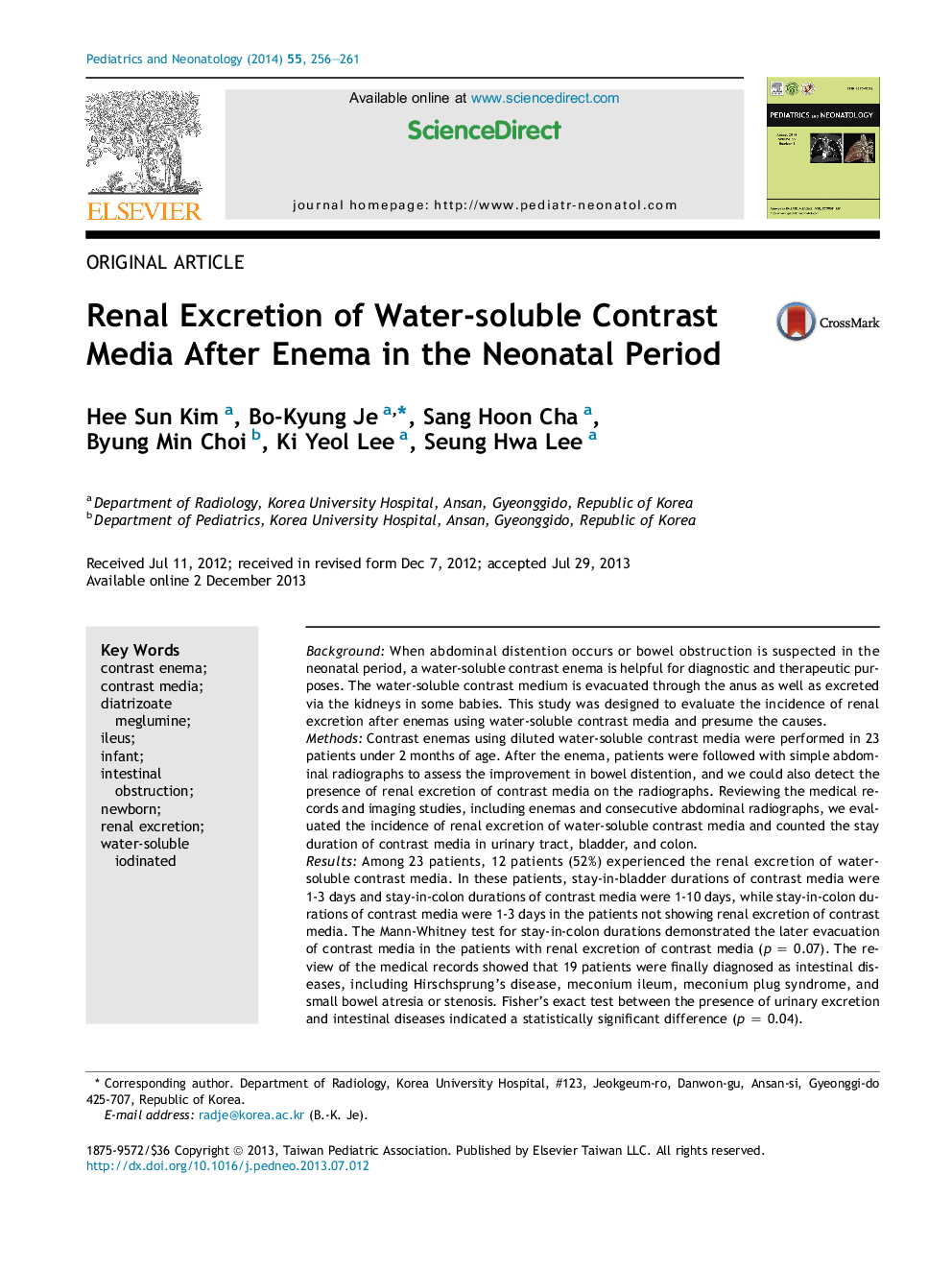| کد مقاله | کد نشریه | سال انتشار | مقاله انگلیسی | نسخه تمام متن |
|---|---|---|---|---|
| 4175030 | 1276166 | 2014 | 6 صفحه PDF | دانلود رایگان |
BackgroundWhen abdominal distention occurs or bowel obstruction is suspected in the neonatal period, a water-soluble contrast enema is helpful for diagnostic and therapeutic purposes. The water-soluble contrast medium is evacuated through the anus as well as excreted via the kidneys in some babies. This study was designed to evaluate the incidence of renal excretion after enemas using water-soluble contrast media and presume the causes.MethodsContrast enemas using diluted water-soluble contrast media were performed in 23 patients under 2 months of age. After the enema, patients were followed with simple abdominal radiographs to assess the improvement in bowel distention, and we could also detect the presence of renal excretion of contrast media on the radiographs. Reviewing the medical records and imaging studies, including enemas and consecutive abdominal radiographs, we evaluated the incidence of renal excretion of water-soluble contrast media and counted the stay duration of contrast media in urinary tract, bladder, and colon.ResultsAmong 23 patients, 12 patients (52%) experienced the renal excretion of water-soluble contrast media. In these patients, stay-in-bladder durations of contrast media were 1-3 days and stay-in-colon durations of contrast media were 1-10 days, while stay-in-colon durations of contrast media were 1-3 days in the patients not showing renal excretion of contrast media. The Mann-Whitney test for stay-in-colon durations demonstrated the later evacuation of contrast media in the patients with renal excretion of contrast media (p = 0.07). The review of the medical records showed that 19 patients were finally diagnosed as intestinal diseases, including Hirschsprung's disease, meconium ileum, meconium plug syndrome, and small bowel atresia or stenosis. Fisher's exact test between the presence of urinary excretion and intestinal diseases indicated a statistically significant difference (p = 0.04).ConclusionThe intestinal diseases causing bowel obstruction may increase the water-soluble contrast media's dwell time in the bowel and also increase urinary excretion.
Journal: Pediatrics & Neonatology - Volume 55, Issue 4, August 2014, Pages 256–261
